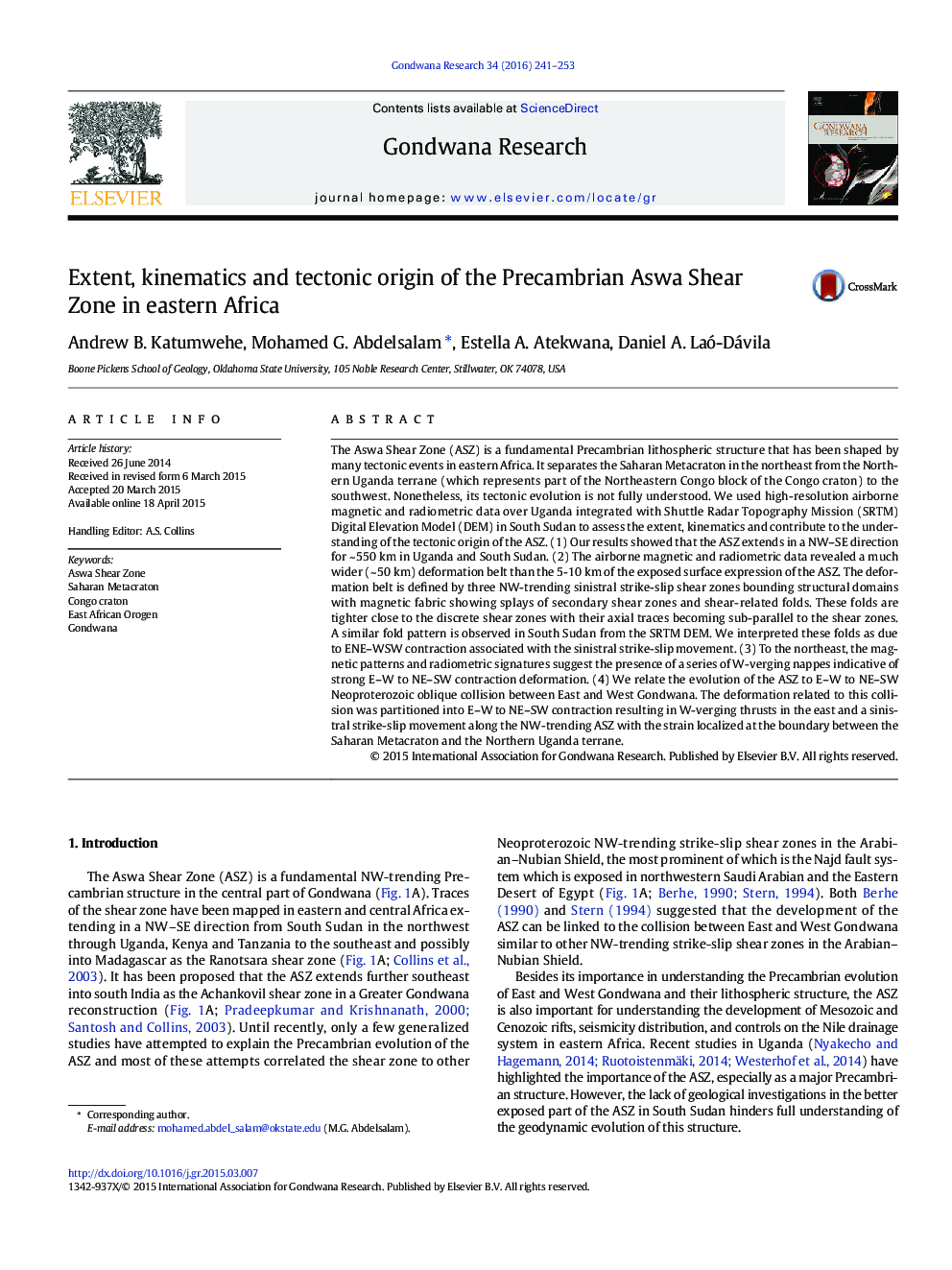| کد مقاله | کد نشریه | سال انتشار | مقاله انگلیسی | نسخه تمام متن |
|---|---|---|---|---|
| 6443319 | 1640137 | 2016 | 13 صفحه PDF | دانلود رایگان |
• We used geophysical data to study the Precambrian Aswa Shear Zone in East Africa.
• We found that it is a 550 km long, 50 km wide sinistral strike-slip system.
• The shear zone might have developed during Neoproterozoic Gondwana collision.
The Aswa Shear Zone (ASZ) is a fundamental Precambrian lithospheric structure that has been shaped by many tectonic events in eastern Africa. It separates the Saharan Metacraton in the northeast from the Northern Uganda terrane (which represents part of the Northeastern Congo block of the Congo craton) to the southwest. Nonetheless, its tectonic evolution is not fully understood. We used high-resolution airborne magnetic and radiometric data over Uganda integrated with Shuttle Radar Topography Mission (SRTM) Digital Elevation Model (DEM) in South Sudan to assess the extent, kinematics and contribute to the understanding of the tectonic origin of the ASZ. (1) Our results showed that the ASZ extends in a NW–SE direction for ~ 550 km in Uganda and South Sudan. (2) The airborne magnetic and radiometric data revealed a much wider (~ 50 km) deformation belt than the 5-10 km of the exposed surface expression of the ASZ. The deformation belt is defined by three NW-trending sinistral strike-slip shear zones bounding structural domains with magnetic fabric showing splays of secondary shear zones and shear-related folds. These folds are tighter close to the discrete shear zones with their axial traces becoming sub-parallel to the shear zones. A similar fold pattern is observed in South Sudan from the SRTM DEM. We interpreted these folds as due to ENE–WSW contraction associated with the sinistral strike-slip movement. (3) To the northeast, the magnetic patterns and radiometric signatures suggest the presence of a series of W-verging nappes indicative of strong E–W to NE–SW contraction deformation. (4) We relate the evolution of the ASZ to E–W to NE–SW Neoproterozoic oblique collision between East and West Gondwana. The deformation related to this collision was partitioned into E–W to NE–SW contraction resulting in W-verging thrusts in the east and a sinistral strike-slip movement along the NW-trending ASZ with the strain localized at the boundary between the Saharan Metacraton and the Northern Uganda terrane.
Figure optionsDownload high-quality image (108 K)Download as PowerPoint slide
Journal: Gondwana Research - Volume 34, June 2016, Pages 241–253
